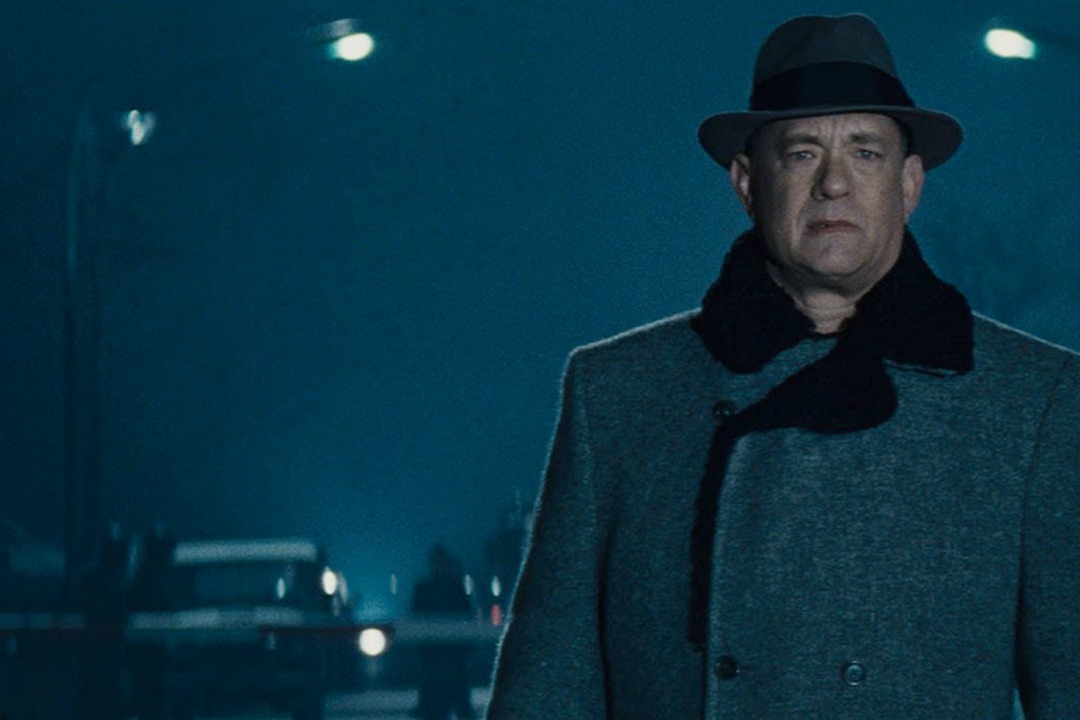Editors’ Note: In anticipation of the 88th Academy Awards on February 28,
we present a series exploring the philosophical and theological elements in each of the eight films nominated for Best Picture. (Caveat: spoilers ahead.)
https://www.youtube.com/watch?v=7JnC2LIJdR0
I am old enough—just old enough—to have gone to elementary school in the 1980s when nuclear bomb drills were still a thing, when under the broad aegis of “emergency preparedness” grade school students would on a monthly basis “duck and cover” under their desks at the sound of an emergency siren, or occasionally evacuate to the hall to lay down with hands over their heads, making the nuclear drill functionally identical to a tornado drill. Fire, tornado, nuclear attack—all were on equal par, equally arbitrary and equally incomprehensible. To the minds of elementary school children, the drills were all equally effective in preventing the demise of Mrs. Sanders’ second-grade class, and should even the worst happen, we imagined that we would still ride the school bus home that afternoon to our families, no worse for the wear. More than the cruel irony of the Cold War era “duck and cover” drills, what strikes me decades later is the vast unknown alternate universe in which my Soviet counterparts did the same, huddling under their desks with the same absurd assurances of survival. The propaganda and the drills were the same, only our enemies were different. I wonder, too, if the cessation of the nuclear drills at school went unnoticed by them like it did for me. One day it seemed that someone somewhere had decided we had only fire and tornadoes to fear.
As someone who grew up in the ‘80s, the Cold War has continued to keep its mysteriousness for me, not merely because the secrets of Cold War geopolitics still remain largely concealed, but rather because of the strangeness of my own memory of it—a memory forged in the pre-reflective way children make memories, a memory made strange by the very organ of memory more than the inherent strangeness of its content. When the Soviet Union dissolved in the December of 1991, bringing the Cold War to an end, I was almost thirteen years old. It has never been lost on me that I lived in a remarkable moment of modern history in which one of modernity’s most powerful and devastating ideological movements seemed to disappear overnight, nor was it lost on me that my experience of it was as a child. Perhaps that is why I have always been “in the bag” for Cold War thrillers. They complicate and inform my own memory. With word of the release of Steven Spielberg’s Bridge of Spies—a collaboration with the Coen Brothers no less!—I was very excited, but with life’s exigencies I wasn’t able to see it until after its Oscar nomination for Best Picture, upping the proverbial ante in any case.
Bridge of Spies is based on the true story of James Donovan (Tom Hanks), the insurance lawyer and former Nuremberg prosecutor, who in 1957 is tasked with defending the Soviet spy Rudolf Abel (Mark Rylance) from capital espionage charges. Later, Donovan is brought to East Berlin to negotiate a prisoner exchange with the Soviet Union for Abel, for the captured U2 spy plane pilot Francis Gary Powers, and for the detained American economics student Frederic Pryor. The film does well to humanize its central characters. Together both Hanks’ Donovan and Rylance’s Abel are manifestly ethical and immanently humane, separated only by the direction of their national allegiances. What is perhaps most interesting about Bridge of Spies, however, is the fact that the plotline is nearly uniformly less interesting than the reality upon which its based. As characters, both Donovan and Abel are deprived of their own far more interesting actual personal histories.
For instance, the film clearly intends to portray Donovan as the humble yet plucky insurance lawyer, rather than the famed Nuremberg prosecutor and political negotiator that he in fact was—an aesthetic decision which the less credulous among us might see as capitulating to Hanks’ range. The same goes for Abel, of course, who seems only to have his principles, rather than his training and experience as an accomplished KGB operative, covert communications savant, and near victim of Stalin’s purges. Yet in both cases, once their actual personal histories are recovered, that manufactured arbitrary character that catalyzes the drama dissolves, as does the familiar hominess of the characters. Hanks’ Donovan seems as surprised as anyone that he’d be given the case, never minding that not only was he an accomplished negotiator and prosecutor, but also that the Nuremberg trials themselves were the result of collaboration with the USSR and England. Likewise, when Abel appears unshaken by his predicament, Donovan asks, “Don’t you ever worry?” Abel replies with implacable calm, “Would it help?”—a line so good, evidently, that the script has him say it more than once. It’s never really entertained that Abel doesn’t worry because he has been trained not to.
In many ways, Bridge of Spies is a Cold War thriller manqué, offering little, if any, of the cloak-and-dagger intrigue that we find in the best of these films, but perhaps that’s the intent of the film, to de-romanticize intrigue as such, to bring out the human dimension behind it. The question remains, then, what takes its place as the lens through which we view the quagmire of the Cold War. For Spielberg and company, the answer seems evident in the film’s anesthetization of the apparently inexplicable: the apparent inexplicability of Donovan being given the case in the first place finds its match in the apparent inexplicability of Abel, a Soviet spy of all things, having dignity and principles.
What’s even more interesting, however, is the way in which this manipulation of the inexplicable expands from the central characters to the film’s depiction of American social attitudes toward the Soviet Union in general and Donovan’s public legal defense of Abel in particular. There are a handful of vignettes, barely worthy of an after school special, in which Donovan is met with the disapproving glowering of his fellow commuters or heckled in the courtroom. Donovan and Abel are beset by those on both sides who fail to see just how inexplicable this all is. In the film, the American jingoism that Donovan nobly deflects is matched by the absurdity of inept Soviet bureaucracy that plagues the prisoner exchange and the release of Frederic Pryor. Yet it is terribly revealing that it is on this point that the script takes its liberties. In fact, some of the most dramatic scenes of the film are utter fictions, including the scene in which the Donovan family home is shot up in a McCarthy-style drive-by, as well as the scene in which Donovan witnesses the execution of a would-be defector from a tram window in East Berlin. Moreover, much of the Pryor storyline is severely embellished. In the film, Pryor is arrested as the Wall is going up, as he tries to help a woman cross over to the West before it’s completed. Yet in reality, Pryor wasn’t even in Berlin for the Wall’s construction; he was vacationing in Denmark. Moreover, his actual detention by the Stasi was hardly the inexplicable display of petty power the scene suggests, but in reality he was detained on account of his affiliation with a defector, caught when he visited her abandoned apartment the Stasi were surveilling. That the Pryor storyline seems only to function to reaffirm Donovan’s American virtue indicates the level of sanitizing necessary to uphold the moral universe created by the film.
Bridge of Spies certainly means to address the present day populism in American politics, capitalizing on both the perceived cynicism of the left as well as the public directionless anger of the right in an age of catastrophic foreign and economic policy, to suggest that they’d be better advised to abandon the rationales behind their outrage and, like Donovan and Abel, play the hand they’re dealt, however inexplicable it is. Yet again, the moral of the story is undercut by the architecture of the film itself. The surface fairness of the film—the moral equivalence drawn between Donovan and Abel, the evenhanded critiques of the American public and Soviet bureaucracy, and so on—is undercut by its more structural elements. Upon Donovan’s arrival to East Berlin, for instance, the cinematography turns almost hilariously grim, as Hanks’ Donovan navigates what appears to be the set of Schindler’s List. The moralizing fairness with which Donovan and Abel are treated barely survives the deeper unfairness of the film, which embellishes and alters the real story in purely self-serving ways. In the end, Bridge of Spies represents a regrettable, yet all too familiar, mode of storytelling, one in which the calculus of innocence and blame is merely reassigned to suit the tastes of the day, leaving the deeper, more fundamental moral questions of the Cold War era unchallenged.
Jay Martin is a doctoral candidate in systematic theology at the University of Notre Dame.



